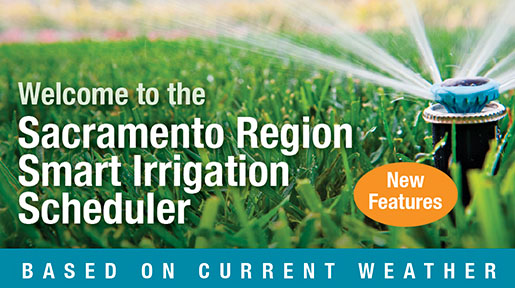Traditional sprinklers spray small droplets that often mist and evaporate before they reach the ground. High-efficiency rotator sprinklers deliver water in multiple heavy droplet streams at a slower rate, allowing water to better sink into the soil and reducing loss due to evaporation and run off. These nozzles also distribute water more evenly, resulting in a more uniformly green lawn with fewer brown spots. Rotators are estimated to reduce water use by 30 percent or more over traditional spray sprinklers.
Here are some detailed step-by-step instructions for replacing your older spray sprinkler nozzles with high efficiency rotators:
Step 1: Turn on your sprinkler system and note:
- The number of sprinklers you have
- The arc for each sprinkler, which should be 45 degrees, 90 degrees, 180 degrees or 360 degrees
- The width and length of each zone
Step 2: Use this information to purchase the appropriate nozzles for your yard.
Step 3: Consider your water pressure. Rotary nozzles work best at 30 to 40 psi. You can use a pressure gage to learn the water pressure at your home. If needed, adjust the pressure by installing pressure-regulating sprinkler bodies or by attaching a master pressure regulator to the sprinkler valves.
Step 4: With your materials ready, swap out your old sprinkler nozzles:
- Gently pull up the sprinkler stem and carefully hold with your hand
- Unscrew the old sprinkler nozzle and remove the filter
- Insert the new sprinkler nozzle and tighten
- Repeat with all of your sprinklers
- Be sure to use the same type of sprinkler nozzle throughout the system
Step 5: Turn on your sprinklers and adjust the radius of the spray, throw of the spray pattern and pressure.
Rebates
Many water providers offer rebates for upgrading to efficient rotators. You can learn about them on our rebates page.
Additional Resources
How to Convert Sprinklers to Rotary Nozzles video from Sustainable Santa Monica—a comprehensive step-by-step video that shows you how to convert spray sprinklers to rotators.
Water Pressure (PSI) and Your Irrigation System video from Rain Bird—discusses the role of water pressure in sprinkler systems and how to test your system.
Sprinkler Symptom Solver from Be Water Smart–lists common sprinkler problems, potential solutions and resources to learn more.

